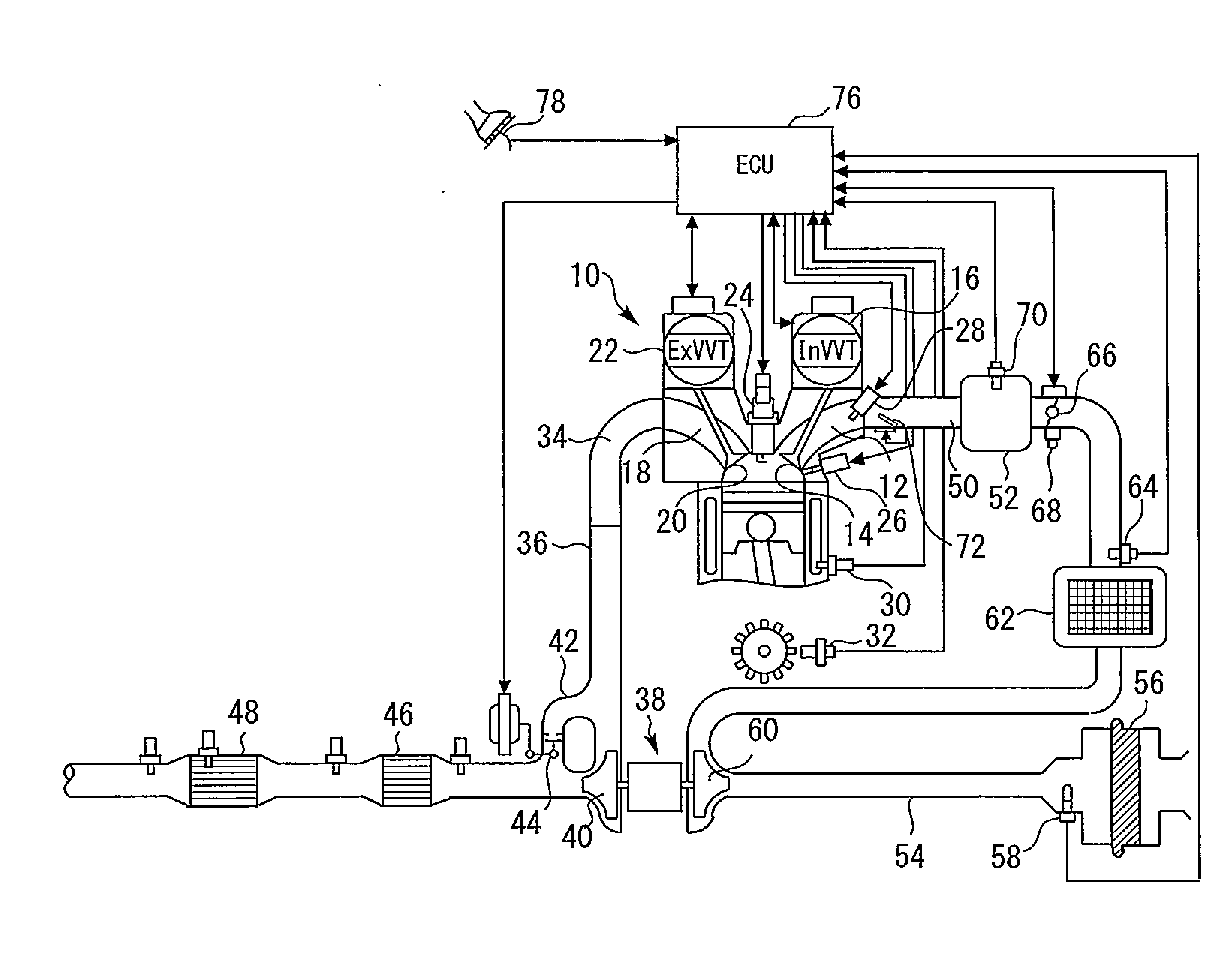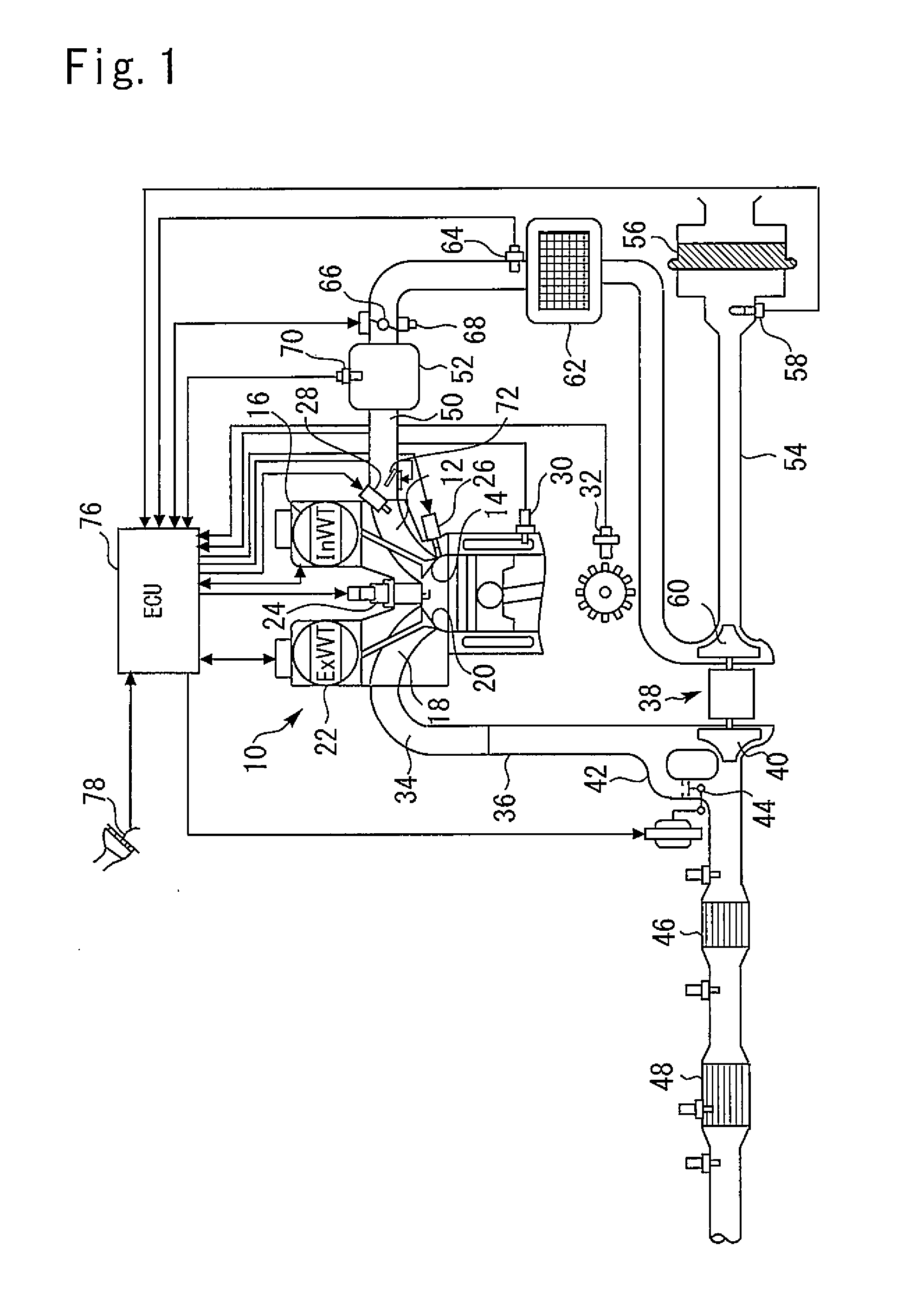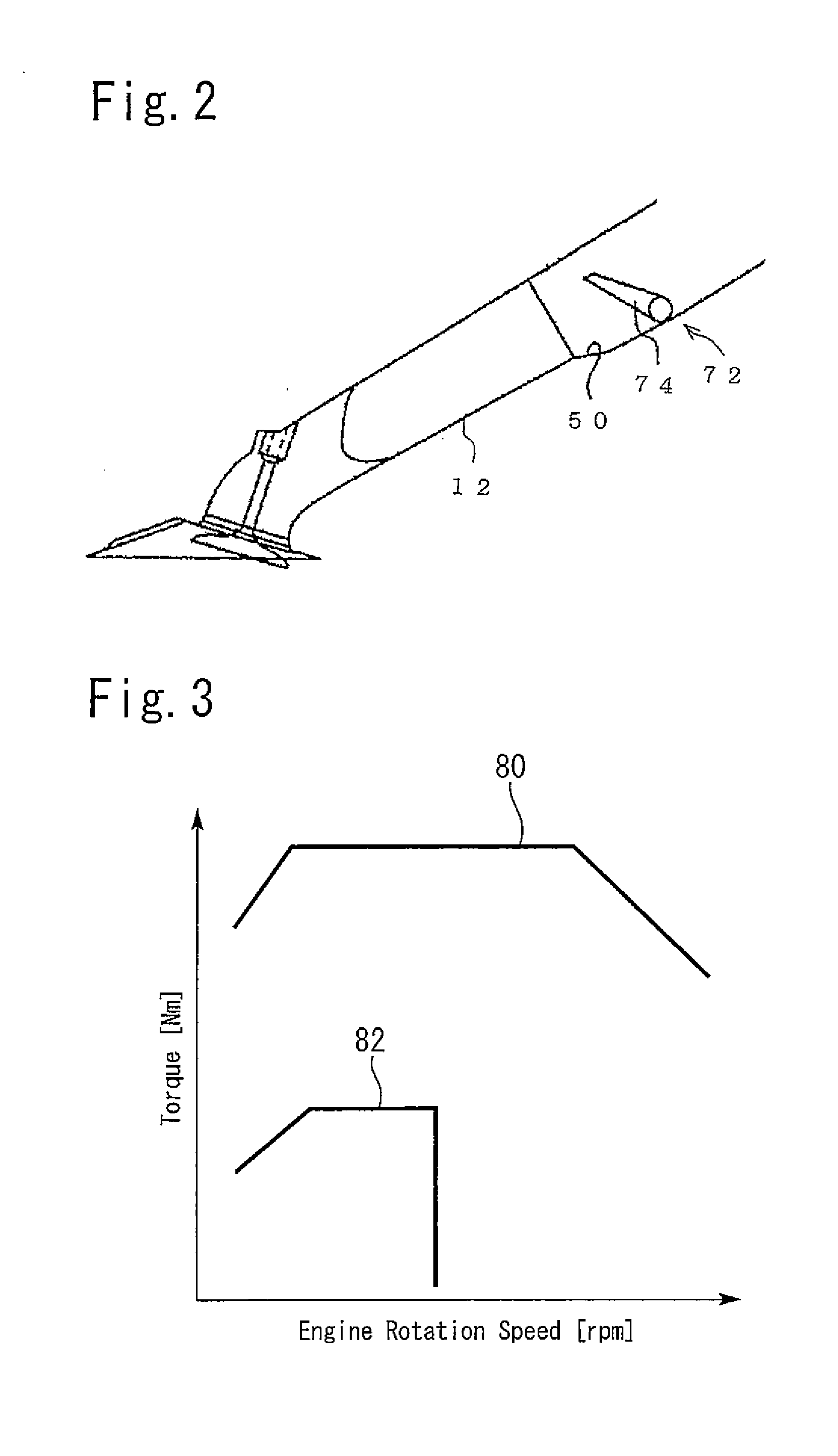Control device for internal combustion engine
a control device and internal combustion engine technology, applied in the direction of electric control, combustion engines, machines/engines, etc., can solve the problems of large torque shocks that are liable to be generated, narrow width in which the air-fuel ratio can shift toward a rich direction, etc., to achieve smooth operation, good combustibility, and change the flow velocity of intake air
- Summary
- Abstract
- Description
- Claims
- Application Information
AI Technical Summary
Benefits of technology
Problems solved by technology
Method used
Image
Examples
first embodiment
[Modification of First Embodiment]
[0132]In the above described first embodiment, a flow velocity adjusting valve that is installed in an intake passage is limited to the TCV 72. However, the configuration of the present invention is not limited thereto. The flow velocity adjusting valve may be any valve mechanism that can generate an air flow inside a cylinder that improves the combustibility in the lean mode, and as long as that function is satisfied, the flow velocity adjusting valve may be, for example, a component that generates an air flow accompanying a tumble flow.
[0133]Further, in the above described first embodiment, the air-fuel ratio boundary 96 that is used in the leaning process is set between the operating state of the internal combustion engine 10 and the opening / closing boundary 84 when the deceleration determination (step 102) regarding the internal combustion engine 10 is newly affirmed. However, this setting is not essential in the present invention. That is, a co...
PUM
 Login to View More
Login to View More Abstract
Description
Claims
Application Information
 Login to View More
Login to View More - R&D
- Intellectual Property
- Life Sciences
- Materials
- Tech Scout
- Unparalleled Data Quality
- Higher Quality Content
- 60% Fewer Hallucinations
Browse by: Latest US Patents, China's latest patents, Technical Efficacy Thesaurus, Application Domain, Technology Topic, Popular Technical Reports.
© 2025 PatSnap. All rights reserved.Legal|Privacy policy|Modern Slavery Act Transparency Statement|Sitemap|About US| Contact US: help@patsnap.com



